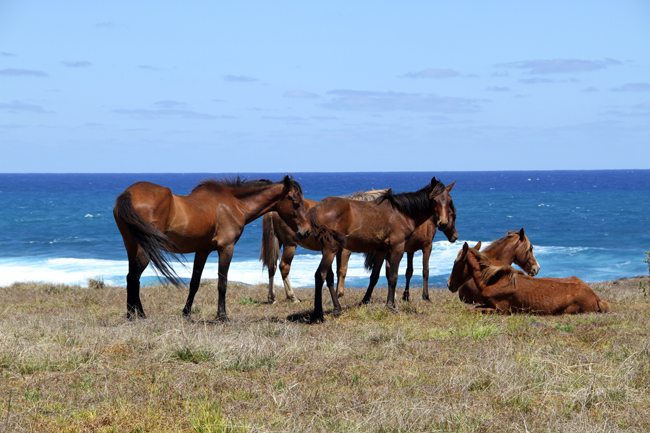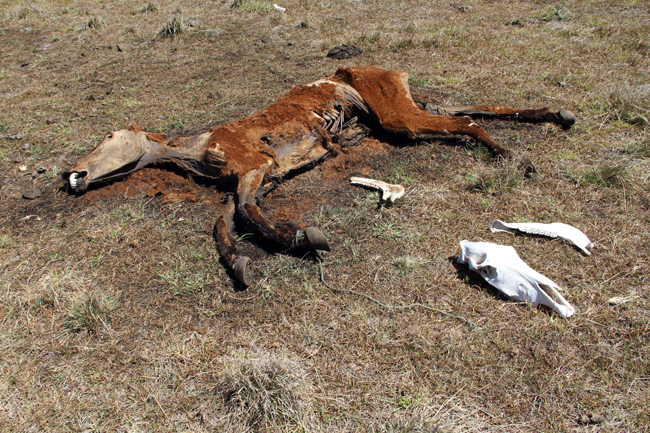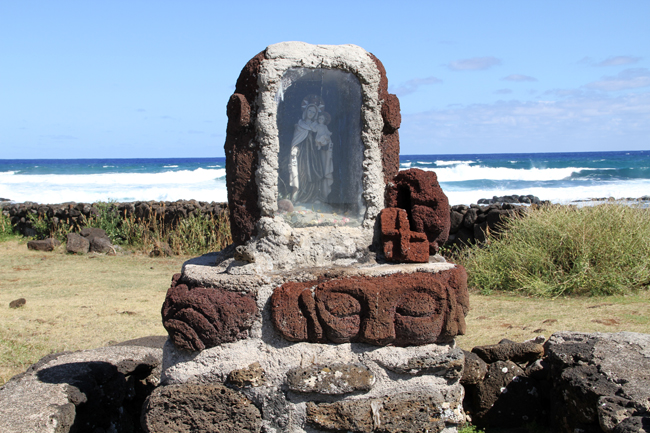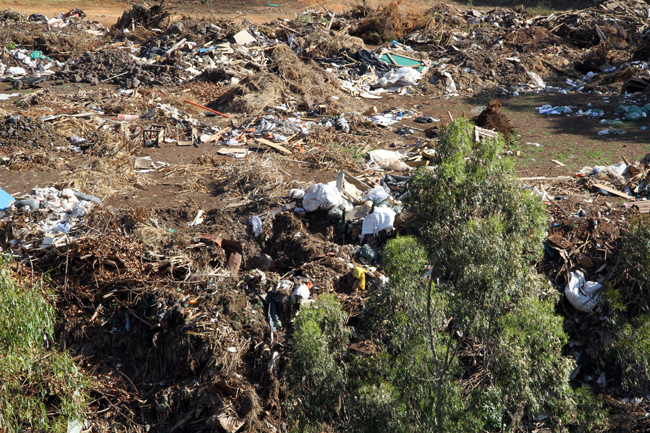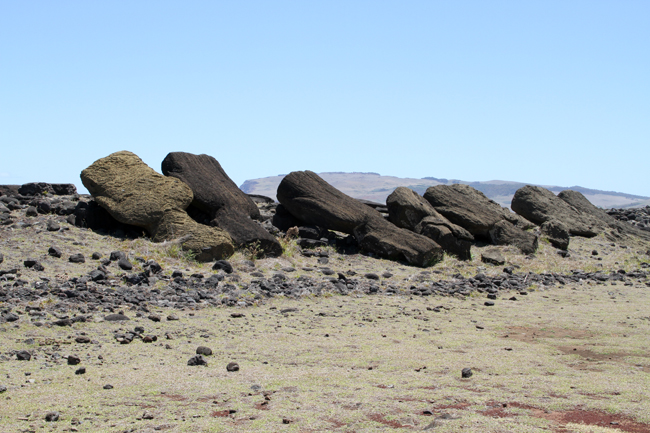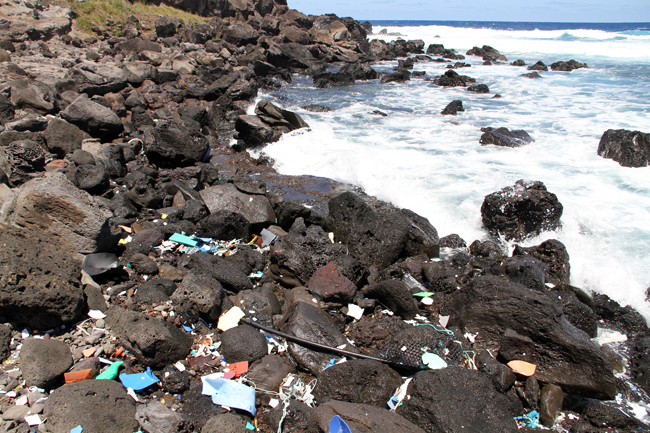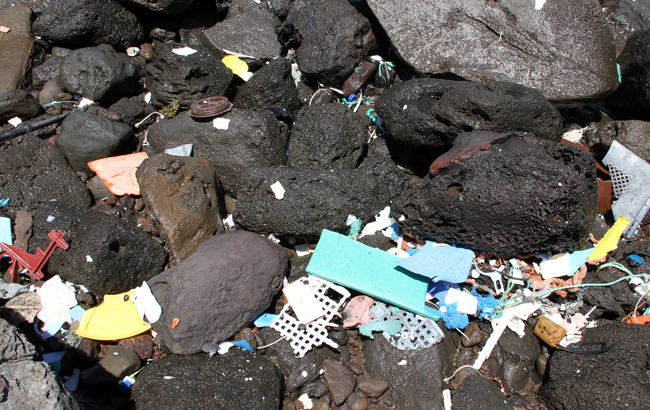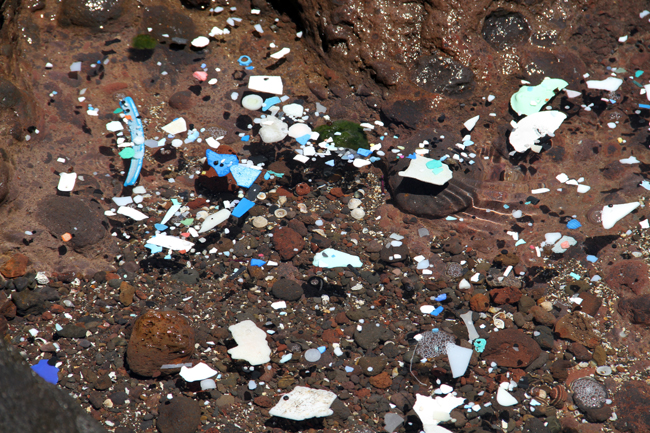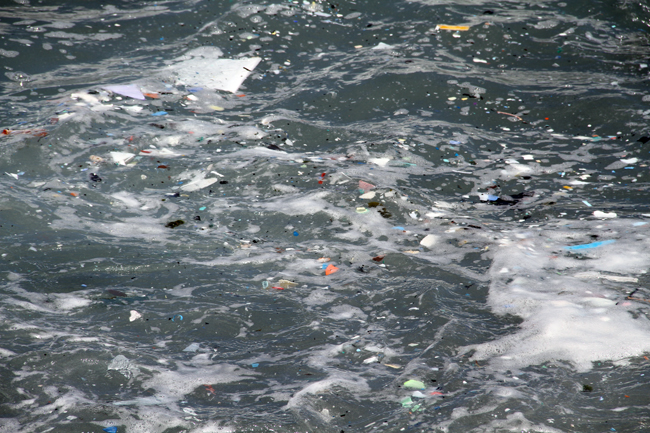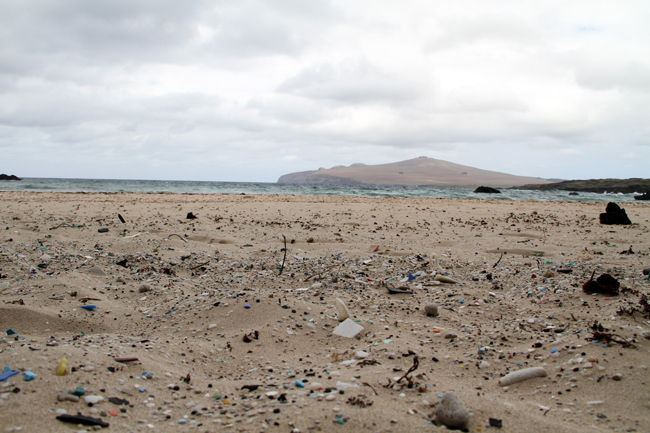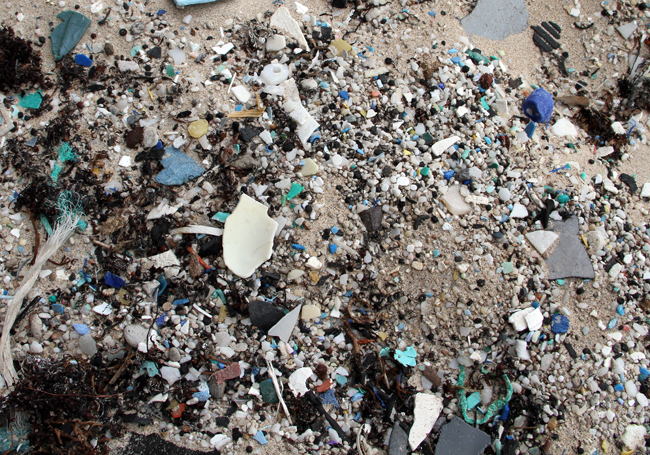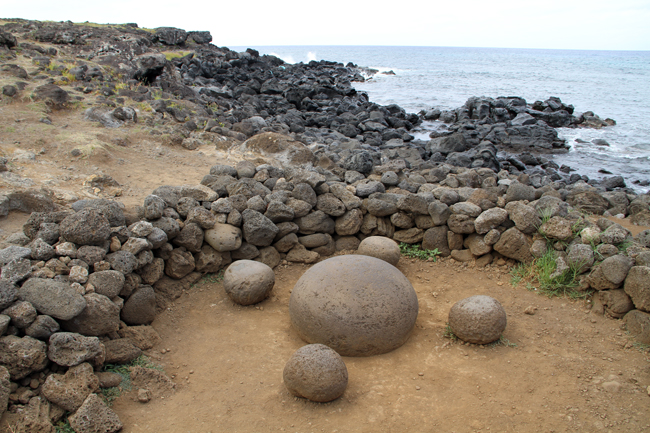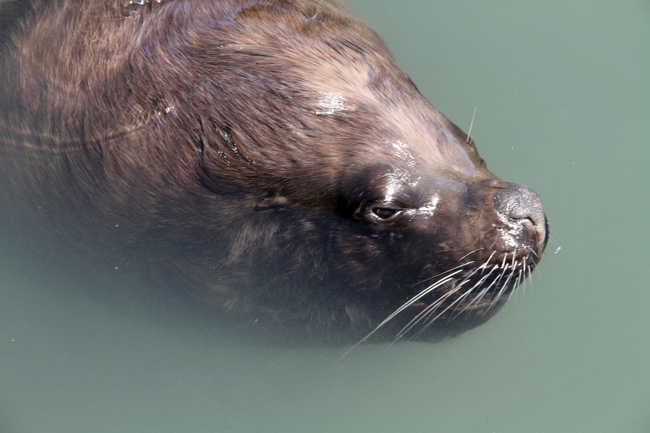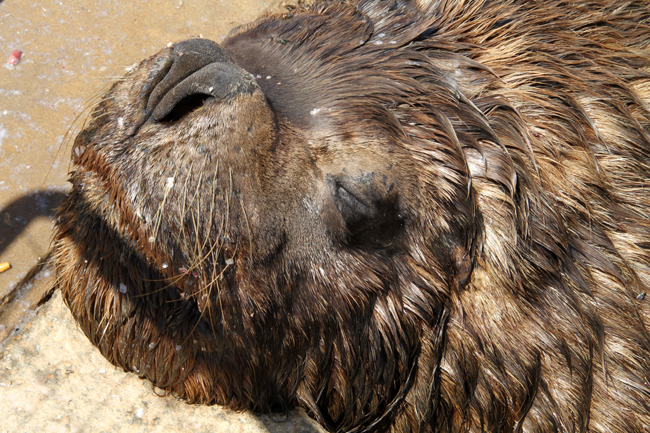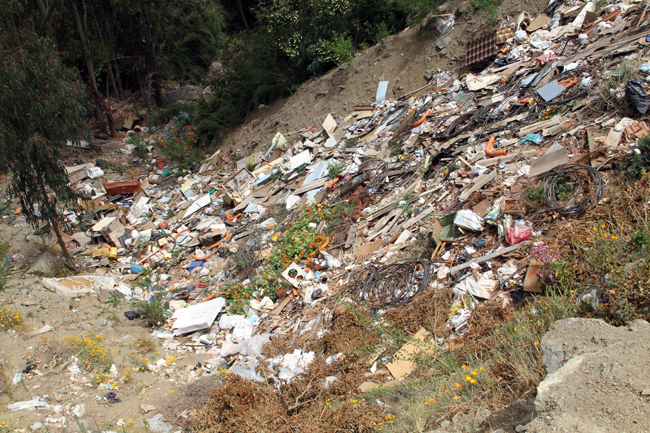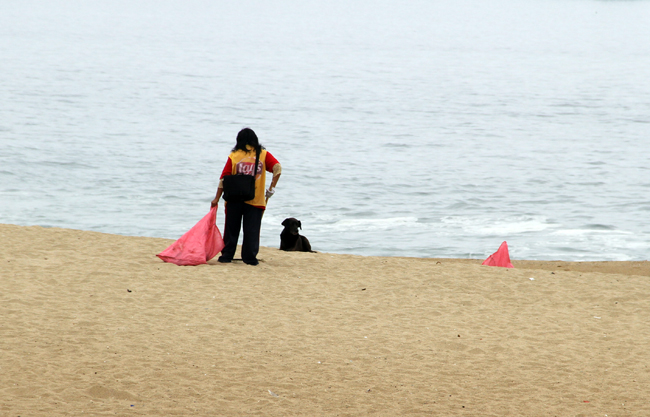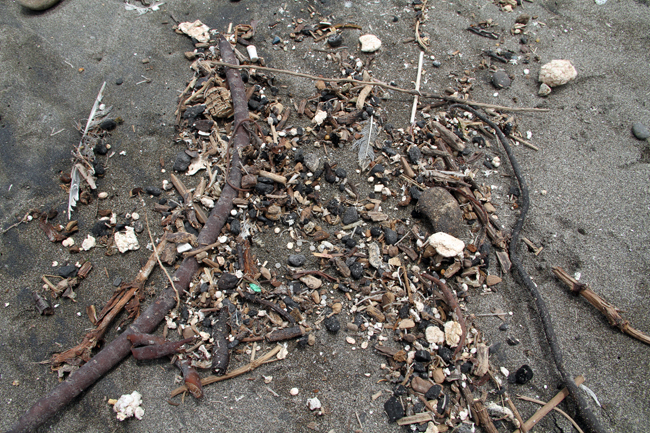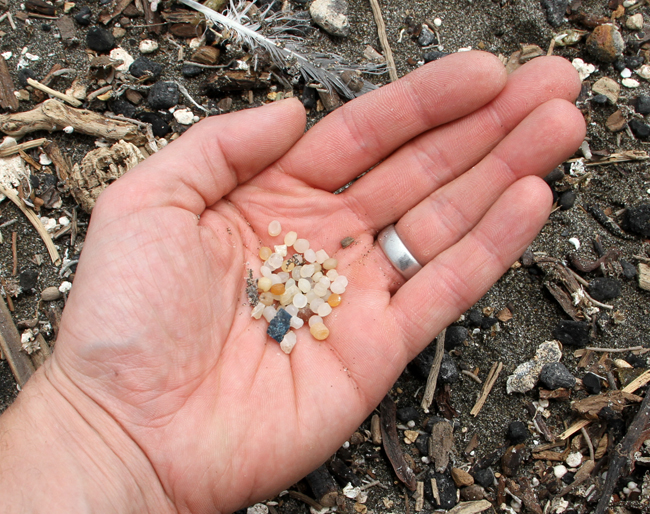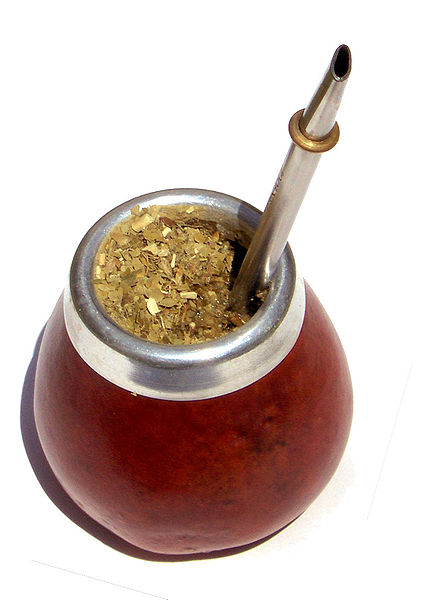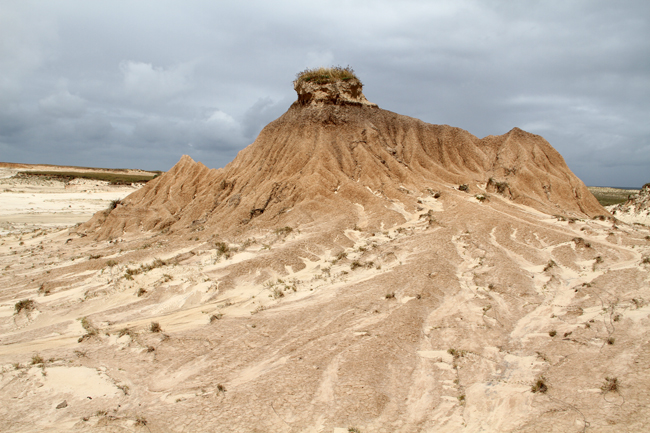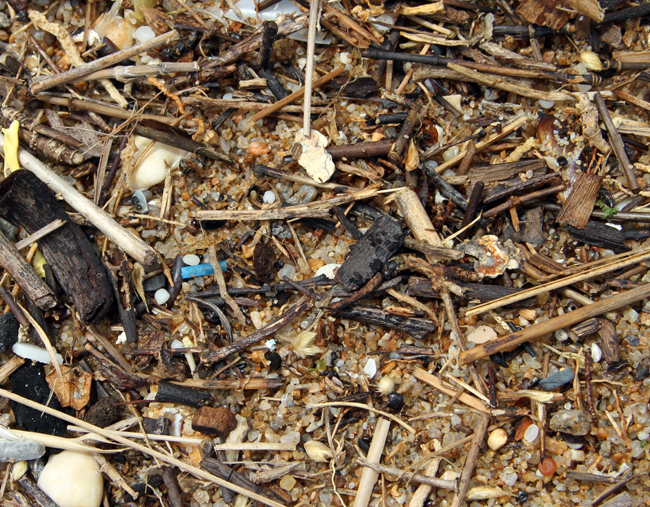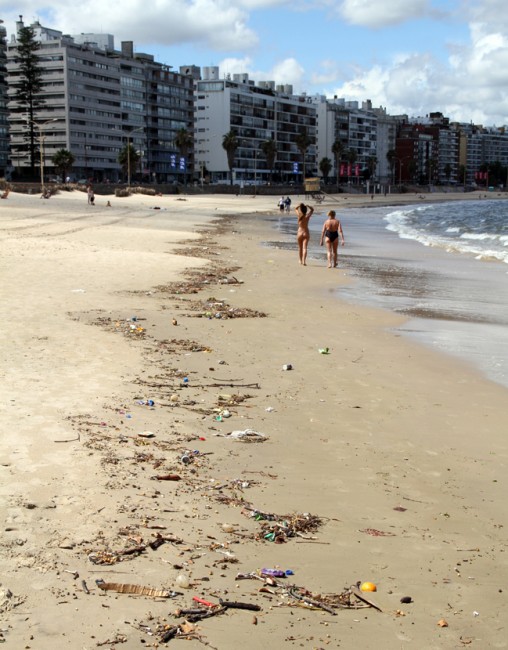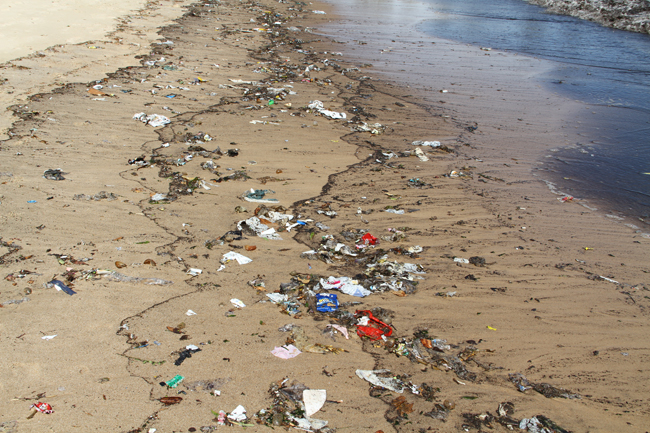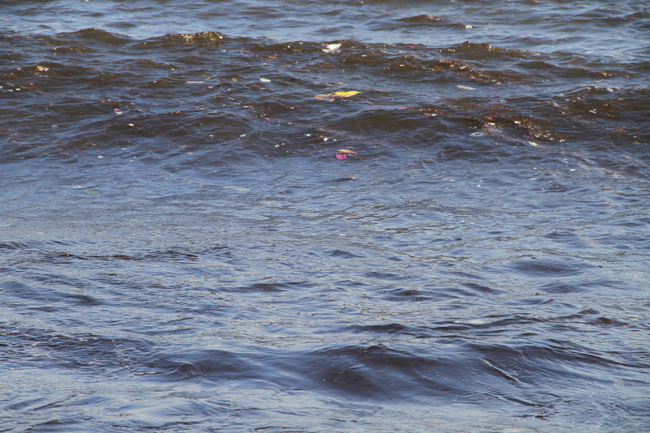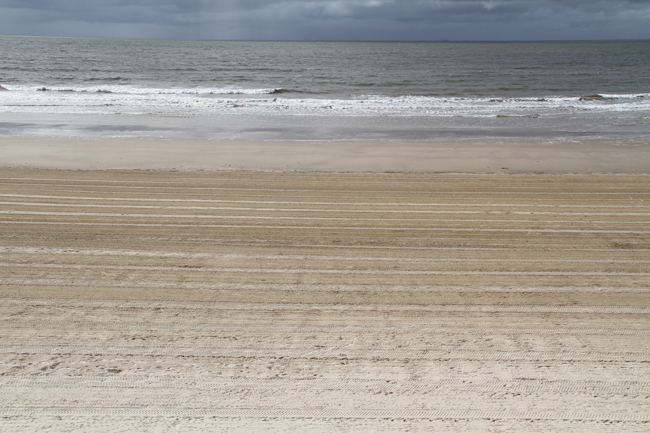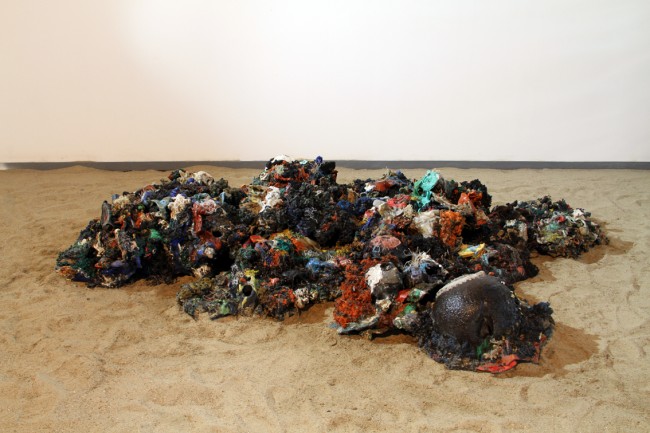The weather prediction is bad for Tuesday with fierce winds so we change our plan and try to rent a boat today to go to the close by Isla de Gorriti. It is located in front of Punta Del Este, a beach town and resort in the process of getting ready for mass tourism coming mainly from Argentina during the Christmas holidays. We get on a small motorboat that brings us to the island and will pick us up no later than 4pm. There is no one living on the island where we can spend the night in case we miss the boat. I’m doubting which scenario I prefer because the island is like a Bounty commercial… We decide to circumnavigate the island to have an idea of the overall pollution degree. In the course of several hours we fill up two big bags.
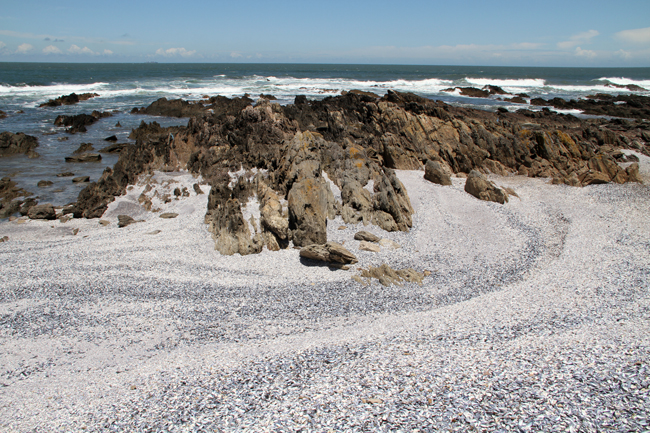
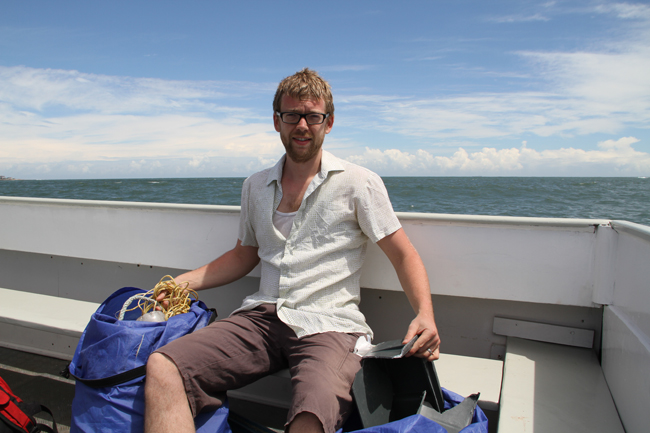
On the windy side of the island facing the ocean, we check the last flood line and I’m shocked about the amount of plastic pellets or nurdles we find. Without any effort I can pick up 10 or more pieces in an area of just 10 x 10 cm. Most of them are quite new (no cracks or color changes) so I think they come from a local (South American) plastic company.
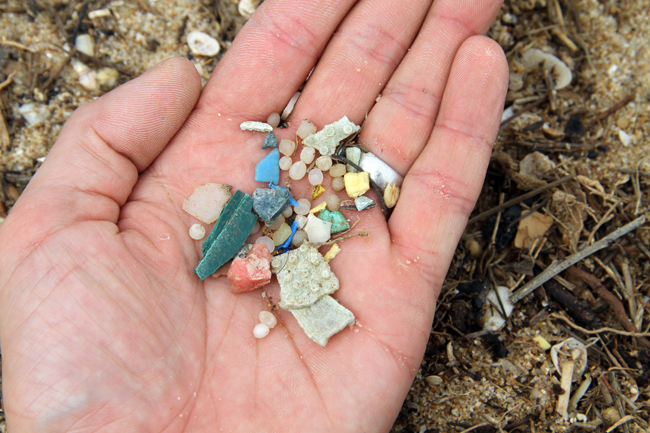
Plastic resin pellets are small granules generally in the shape of a cylinder or a disk with a diameter of a few mm. These plastic particles are industrial raw material (also called virgin plastic) transported to manufacturing sites where “user plastics” are made by re-melting and molding it into the final products. Resin pellets can be unintentionally released to the environment, both during manufacturing and transport.
Dr Hideshige Takada, professor of organic geochemistry at Tokyo University of Agriculture and Technology, has been examining these pellets for the pollutants they carry. Anyone who finds nurdles on the beach is encouraged to send them to him for analysis. The pellets, which are made from crude oil, work as magnets on oil based ‘persistent organic pollutants’ or POPs, which previously were dumped in the oceans. They ‘store’ the pollutants and become chemical mini bombs, which fish take for food and which inevitably end up on our plate. Dr Takada creates graphs which show the amount of the different POPs that are found in the pellets worldwide.
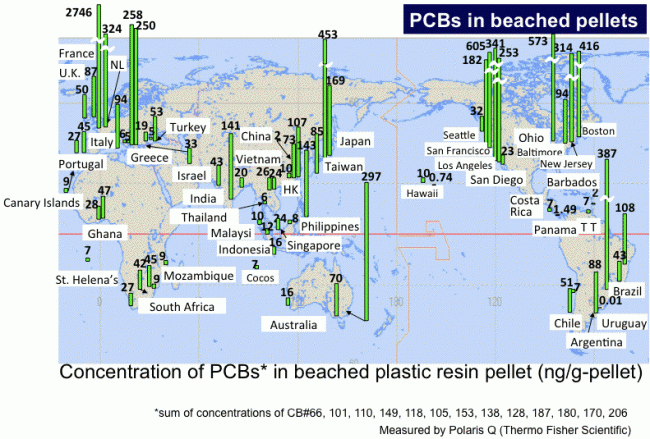
One of the most common chemicals in plastics is Bisphenol A. This compound is an endocrine disruptor which can mimic oestrogen and has been linked with an array of afflictions as diverse as diabetes, heart disease, breast cancer, thyroid disorders, ADHD, infertility, erectile dysfunction, early-onset menstruation and obesity. Bisphenol A and other persistent organic pollutants (POPs) can pass through the placental wall and also enter infants through breast milk. Is it a coincidence that all the before mentioned diseases exploded in the last decades?
We make it to the boat in time and continue to drive up the coast to see whether it makes sense to come back the next day. The further we drive towards Brazil and an open connection to the ocean, the more plastic we find that is not directly relating to land pollution or which shows more traces of a long life at sea.
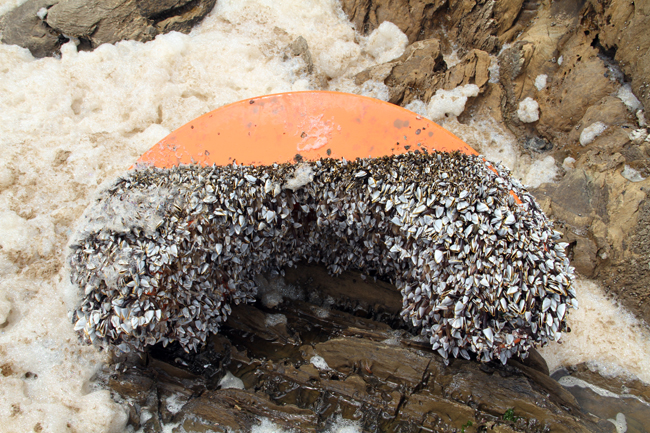
We collect two more bags and then I realize that I’m as red as a lobster. My white trash winter skin was not prepared well for the Uruguayan summer and on top of that I learn now (better late than never), that exactly above this area there is a huge hole in the ozone layer. Talking about one problem… Doctors advise to keep away from the sun between 11AM and 7PM or ware extreme solar protection. I buy anti UV ray solar cream and put more cream on than I can handle, but it is to late. I feel a tickling sensation wherever the sun got to me and contrary to ‘normal sunburns’ which turn my skin fashionable brown the next day, this one keeps itching and burning for three days. It even hurts when I take a shower in the morning, trying in vain to wake up from this surrealistic adventure. Where am I? What am I doing here? Please give my soul a green card!

